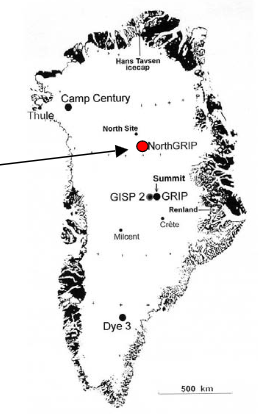TADEAS: tohle je tusim mix nekolika vrtu gisp, grip, camp century, dye 3 a pravdepodobne dalsi, je to z ruznych mist gronska
"Greenland is just one location and temperature variations seen in ice core records may not be characteristic of global temperatures. However, global proxy reconstructions have tended to show similar patterns, with current temperatures lower than the early Holocene maximum.
Unless greenhouse gas emissions cease in the near future, warming will continue and, by the middle of the 21st century, Greenland – and the world as a whole – will likely experience temperatures that are unprecedented at least since the last interglacial period 125,000 years ago."
also
"In the last million years the Earth’s climate has alternated between ice ages lasting about 100,000 years and interglacial periods of 10,000 to 15,000 years. The new results from the NEEM ice core drilling project in northwest Greenland, led by the Niels Bohr Institute at the University of Copenhagen show that the climate in Greenland was around 8 degrees C warmer than today during the last interglacial period, the Eemian period, 130,000 to 115,000 years ago."
no a pak tu mame treba sedimenty z baffin island lake
"An analysis of sediment cores indicates that biological and chemical changes occurring at a remote Arctic lake are unprecedented over the past 200,000 years and likely are the result of human-caused climate change, according to a new study led by the University of Colorado at Boulder. "
tady sem nasel nejakou starsi mapku par vrtu
